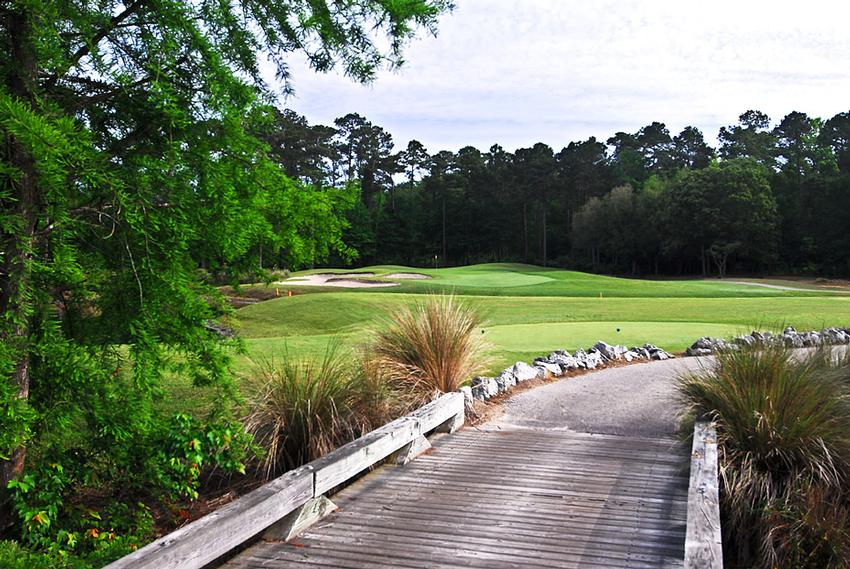The Little River course was closed for nine weeks from mid-June to mid-August this past summer to regrass and enlarge greens.
TifEagle ultradwarf Bermudagrass was installed on greens that were enlarged back to – and in some cases beyond – their original size. That added about 20,000 square feet combined to the 18 greens, increasing them from a total of 73,000 square feet to more than 93,000, according to Max Morgan, vice president and director of agronomy for course owner and operator Founders Group International.
The greens had shrunk because of a great amount of fairway encroachment that had occurred.
“We reclaimed and added a little bit extra where we could,” Morgan said. “The greens are terrific now. They were very small before. They’re more enjoyable now and they look great.”
The 6,923-yard layout that opened in 1988 was designed by Tom Jackson, who toured the property prior to the project and gave his stamp of approval on FGI’s planned changes.
A minimally-invasive no-till re-grassing method allowed the course to reopen rather quickly.Several pin placements were regained that had been lost over the years. Particularly, the middle of the hourglass-shaped 10th green was enlarged from less than 10 yards to more than 20, and the front of the fifth green was significantly enlarged to become more receptive.
Bunker renovations were planned this summer as well, but they have been put off until this winter. The course will remain open as one or two holes will be done at a time over about three months. A 2-inch layer of porous Capillary Concrete about 5 inches below the top of the sand will be used as the foundation of the bunkers, which should aid in their drainage and consistency.
Some bunkers will be reshaped and/or decreased in size, particularly ones that were on the periphery of play. The renovations add to recent improvements at River Hills, which had a clubhouse renovation in 2019. FGI also funded a major renovation project at the Grande Dunes Resort Course this summer.

Greens were not overseeded at either River Hills or Grande Dunes this winter to avoid a transition period where the installed grasses would have to compete with the dying poa trivialis overseed in late spring.







